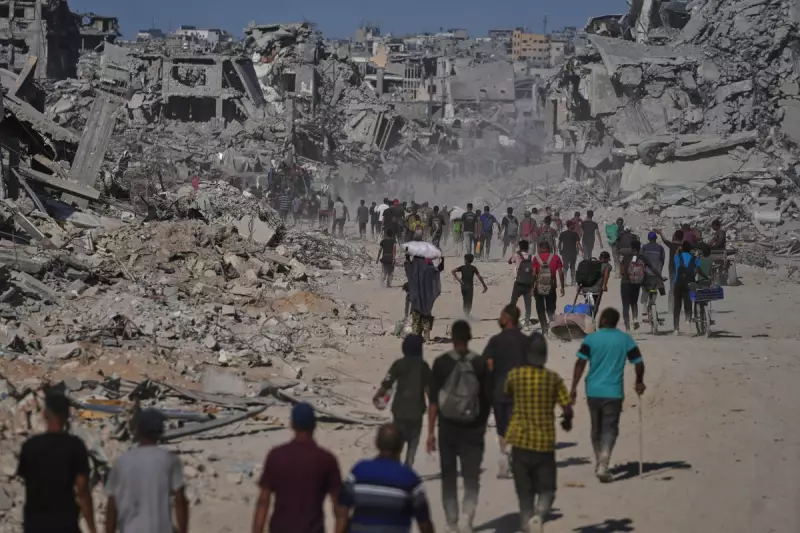
In a dramatic intervention into one of the world's most intractable conflicts, former US President Donald Trump has unveiled a comprehensive ceasefire proposal aimed at ending the devastating violence between Israel and Hamas in Gaza.
The Proposal That Could Change Everything
Trump's framework, revealed amid escalating international pressure, outlines a phased approach to peace that prioritises the safe return of hostages while addressing the humanitarian catastrophe unfolding in the Gaza Strip. The plan represents the most detailed American-led initiative since hostilities erupted, though it faces significant political hurdles on all sides.
Key Components of the Trump Plan
The proposed agreement contains several critical elements designed to build confidence between the warring parties:
- Immediate humanitarian pause to allow crucial aid delivery to Gaza's civilian population
- Phased hostage release beginning with women, children and elderly captives
- International monitoring mechanism to verify compliance from both sides
- Gradual de-escalation of military operations leading to full ceasefire
Political Minefields and Diplomatic Challenges
Initial reactions from regional players suggest the road to implementation will be fraught with difficulty. Hardline elements within both Israeli and Palestinian leadership have expressed scepticism about the proposal's viability, while international observers question whether Trump maintains sufficient political capital to broker such a sensitive agreement.
"This represents the most significant diplomatic movement we've seen in months," noted Middle East analyst Dr Sarah Chen. "However, the devil will be in the implementation details and whether both sides are willing to make the painful concessions necessary for peace."
The Human Cost of Continued Conflict
Behind the political manoeuvring lies a devastating humanitarian reality. Gaza's infrastructure lies in ruins, with hospitals overwhelmed and basic supplies running critically low. The proposed ceasefire could provide a lifeline to millions of civilians caught in the crossfire, though aid agencies warn that even a temporary pause may be insufficient to address the scale of suffering.
What Happens Next?
Diplomatic sources indicate that shuttle negotiations are underway between Washington, Jerusalem and regional capitals to build consensus around the proposal. The coming days will prove crucial in determining whether this initiative represents a genuine breakthrough or merely another false dawn in the long history of Middle East peace efforts.
With pressure mounting from international allies and domestic constituencies alike, all parties face difficult choices between military objectives and humanitarian imperatives. The world watches anxiously to see if Trump's gamble can achieve what so many previous efforts have failed to deliver: a lasting peace in one of the world's most volatile regions.





